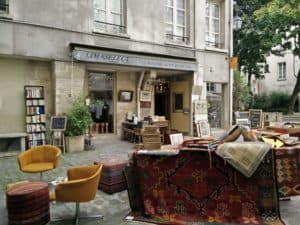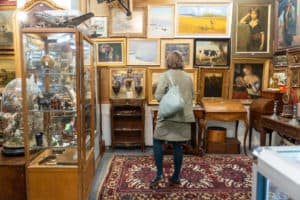Region
Tucked between the Amstel River and the bustling city center of Amsterdam lies Waterlooplein Market, the oldest flea market in the Netherlands, dating back to 1885. What began as a hub for Jewish merchants and secondhand traders over a century ago has since evolved into a colorful, eclectic, and sometimes chaotic space reflecting the capital’s shifting subcultures and global influences.
Open Monday through Saturday, Waterlooplein Market is home to around 300 market stalls, making it a constant hive of activity. Unlike more curated vintage markets or refined antique halls, Waterlooplein has retained a raw, urban edge. Locals, tourists, and bargain hunters mingle there in search of unexpected finds, such as vintage Levi's, combat boots, vinyl records, obscure electronics, and occasionally, antiques and curiosities.
But let's set realistic expectations: This is not your typical antique market. While Waterlooplein Market is undoubtedly historic, only about a quarter of the vendors sell vintage or antique goods, and even then, it's often a mix of genuine bric-a-brac, decorative reproductions, and the occasional tourist trinket. Expect to encounter items like engraved faux scrimshaw, copper sailing ornaments, and mass-produced retro prints—objects that walk a fine line between kitsch and collectible.
The market’s personality has noticeably shifted in recent years. Streetwear, graphic tees, festival gear, and graffiti supplies are now more prominent, reflecting a strong connection with Amsterdam’s alternative and youth culture. It's less "Rembrandt-era silver candlesticks" and more "Che Guevara posters and tie-dye scarves." Some will find charm in this bohemian chaos, while others may leave feeling underwhelmed—especially those in search of serious antiques or quality vintage finds.
That said, Waterlooplein Market remains a uniquely Amsterdam experience. There's a certain thrill in rummaging through dusty boxes and making unexpected discoveries, especially against the backdrop of the city’s iconic gabled houses, canals, and cafés. For travelers with time, curiosity, and a sense of humor, the market can offer gems, both material and cultural.
However, if you’re short on time or in search of genuine antiques, we recommend heading to IJ-Hallen, the city’s massive monthly flea market, or exploring Amsterdam’s antique shops and vintage boutiques in the Jordaan or Nine Streets districts instead.

























Gerrit-Jan Roelink
6th June 2015 at 16:09Waterlooplein Markt is today not what it used to be. This outdoor market has lost a lot of charm over the decades by becoming very commercial and losing the depth in quaint little stalls. Still worth a quick visit for the vintage clothes, just don’t expect any great deals.
Josephine Kelley
23rd February 2016 at 14:21It is interesting for its history and cultural aspect. You will find many terrible things mixed with some great ones in the flea market. If you have the patience and time to walk around, you might be pleasantly surprised. They only take cash there. Another one had nice women t-shirts and dresses with great fabric. The market is not beautiful but it is interesting to visit overall. From there you can walk to Rembrandtplein and have a nice meal/coffee.
Colleen Dean
20th May 2016 at 18:58This is not what it used to be: it is now a bit too touristy and it lost its Flea market idea and the prices are higher than a average flea market but of you walk equally to the official Flea market Street you can find some cheaper stores with real Flea market stuff, I still love this place it got a great market atmosphere go and check it!
Justen Lups
8th July 2016 at 23:40While not as interesting or varied as the De Looier Antiques Market, this is still nice for a short stroll. Some of the items are sadly new touristy souvenirs.